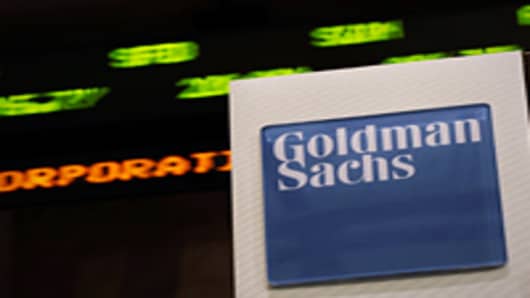“One of the figures that didn't seem to make sense in Goldman's earnings was a number that estimates the market risk on a broker's balance sheet. This indicator, called Value at Risk, or VaR, moved up only 5% in the third quarter from the second. If Goldman was placing big bets in volatile markets—like the short trade in mortgages—VaR might be expected to move up by more,” Peter Eavis at Fortune wrotein September of 2007.
Goldman seemed to be immune to the rule of financial markets that risk and reward were roughly correlated.
The Senate report explains exactly how Goldman accomplished this:
The dates on which Goldman senior executives ordered the Mortgage Department to reduce its VAR—on February 21 and August 21—were within two weeks before the end of Goldman’s fiscal quarters. In each case, the result was an immediate drop in VAR through the end of the quarter. In February 2007, the department’s VAR dropped from $92 million to $81 million by the end of the quarter. In August 2007, the department’s VAR dropped even more sharply, from a record high of over $110 million to $79.7 million by the end of the quarter. The lower Firmwide VAR figures that resulted from the Mortgage Department’s VAR reductions were publicly reported in Goldman’s quarterly financial reports.
The intent here seems somewhat reminiscent of the famous Lehman Brothers Repo 105 transactions, in which the firm would appear to dramatically reduce risk around its quarterly earnings reports. The apparent goal was to make it look like the firm was taking less risk than it was.
But there’s a huge difference between Lehman and Goldman. Where Lehman was engaging in accounting chicanery to appear less risky, Goldman was actually covering its positions. At Goldman, there was none of that Lehman business of renting out assets to take them off-balance sheet.
They actually sold risky assets or bought assets to hedge existing positions. Where Lehman’s quarterly risk manipulation was based on a lie, Goldman’s was based in reality.
Goldman wasn’t exactly hiding this. Back in 2007, Goldman spokesman Lucas Van Praag explained that the firm had reduced risk because of market volatility. But what he didn’t say—and what shareholders did not know until revealed by the Senate investigation—is that the mortgage desk had blown out risk to 350 percent of its limits in order to make those third-quarter 2007 profits.
___________________________________________
Questions? Comments? Email us atNetNet@cnbc.com
Follow John on Twitter @ twitter.com/Carney
Follow NetNet on Twitter @ twitter.com/CNBCnetnet
Facebook us @ www.facebook.com/NetNetCNBC



